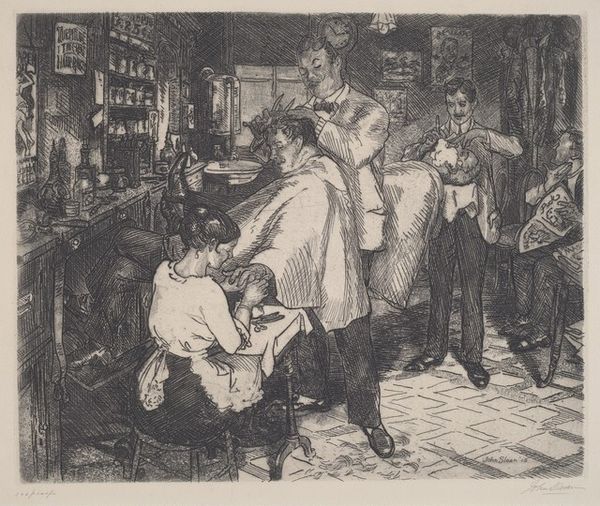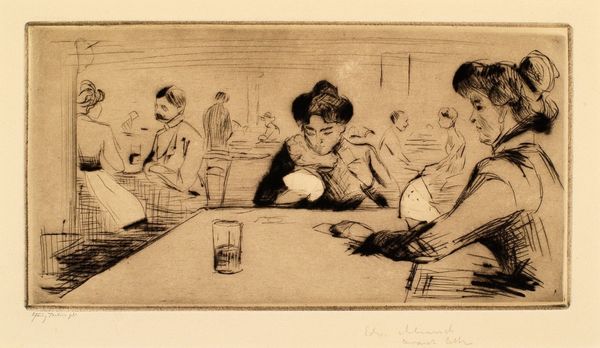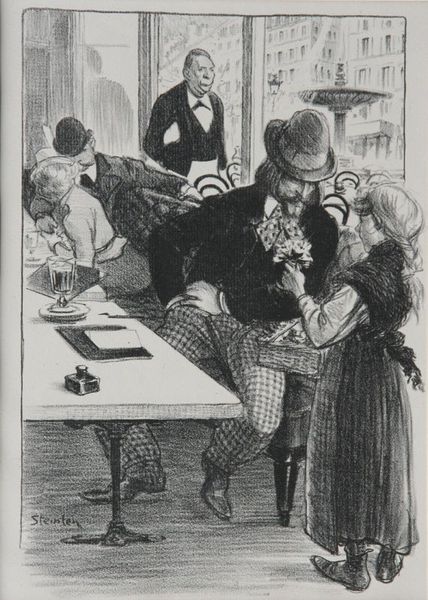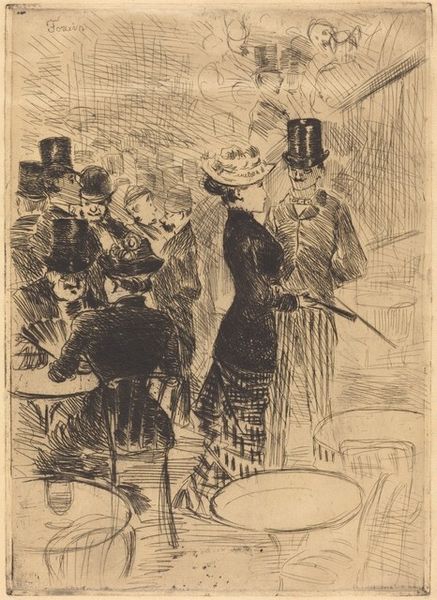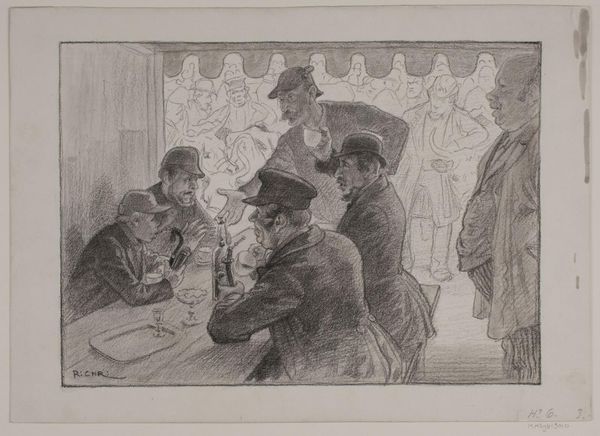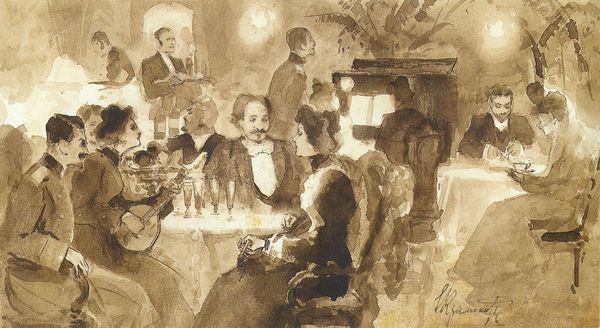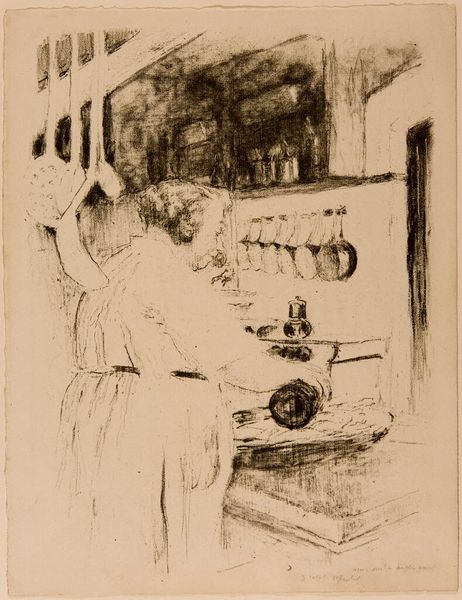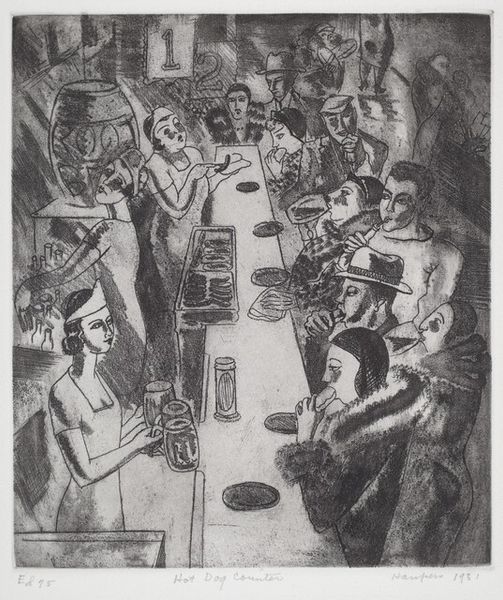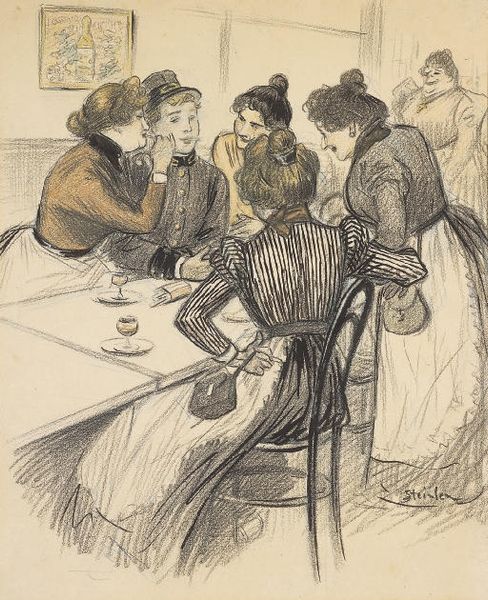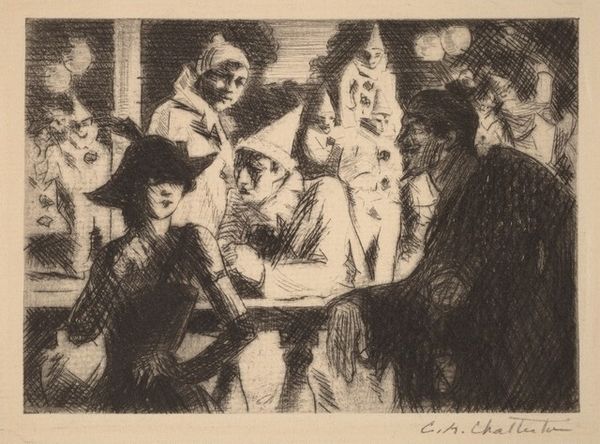
Copyright: Public domain
Théophile Alexandre Steinlen’s ‘Les Bleuets’ is a print, likely a lithograph, capturing a bustling scene, perhaps in Montmartre, Paris. The stark black ink against the paper creates an immediate graphic impact, a quality inherent to printmaking. The image is filled with many people, rendered through dense cross-hatching and fine linework, which gives the scene a sense of energy and movement. This technique, typical of printmaking, allows for the mass production of images, making art more accessible, and speaking to the rise of consumer culture at the time. The artist's hand is evident in the expressive lines, yet the mechanical process of printing connects this work to wider social issues. The choice of printmaking is crucial here. It speaks to the rise of mass media and the democratization of art, reflecting the social changes of the late 19th century. The medium’s reproducibility mirrors the era’s increasing industrialization and commodification of culture. Thinking about ‘Les Bleuets’ reminds us that understanding the materials and making of an artwork is key to unlocking its full cultural and social meaning.
Comments
No comments
Be the first to comment and join the conversation on the ultimate creative platform.
